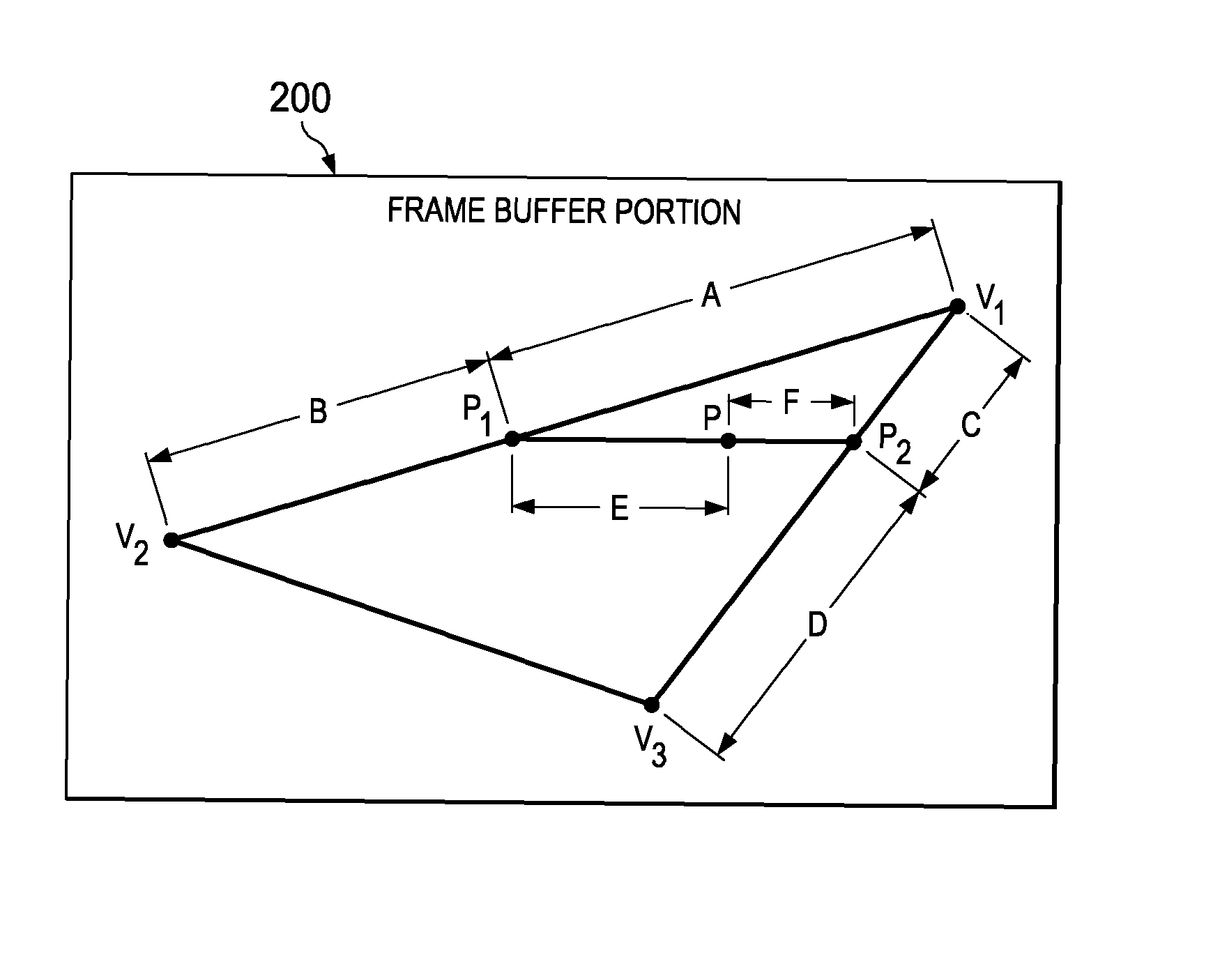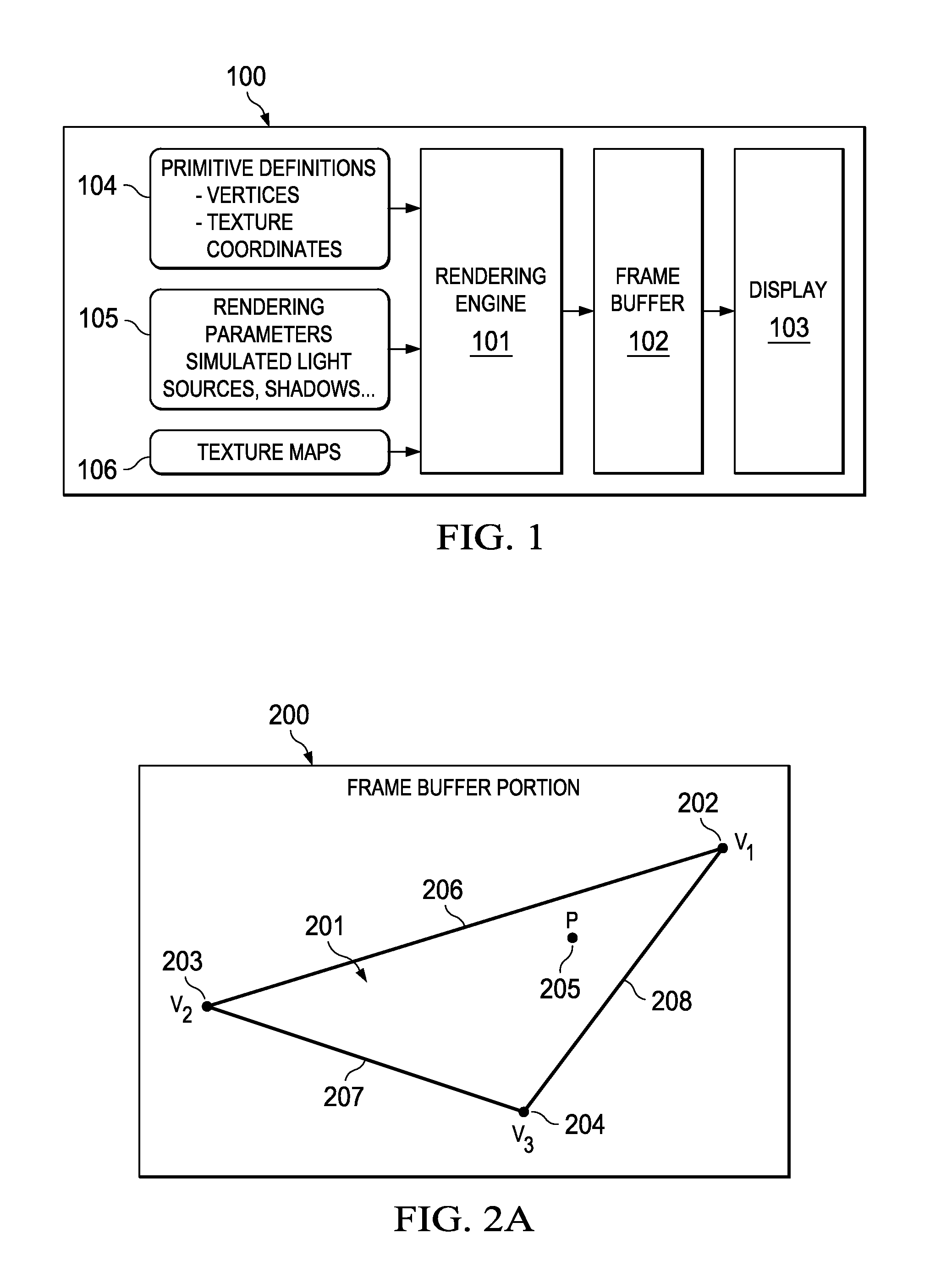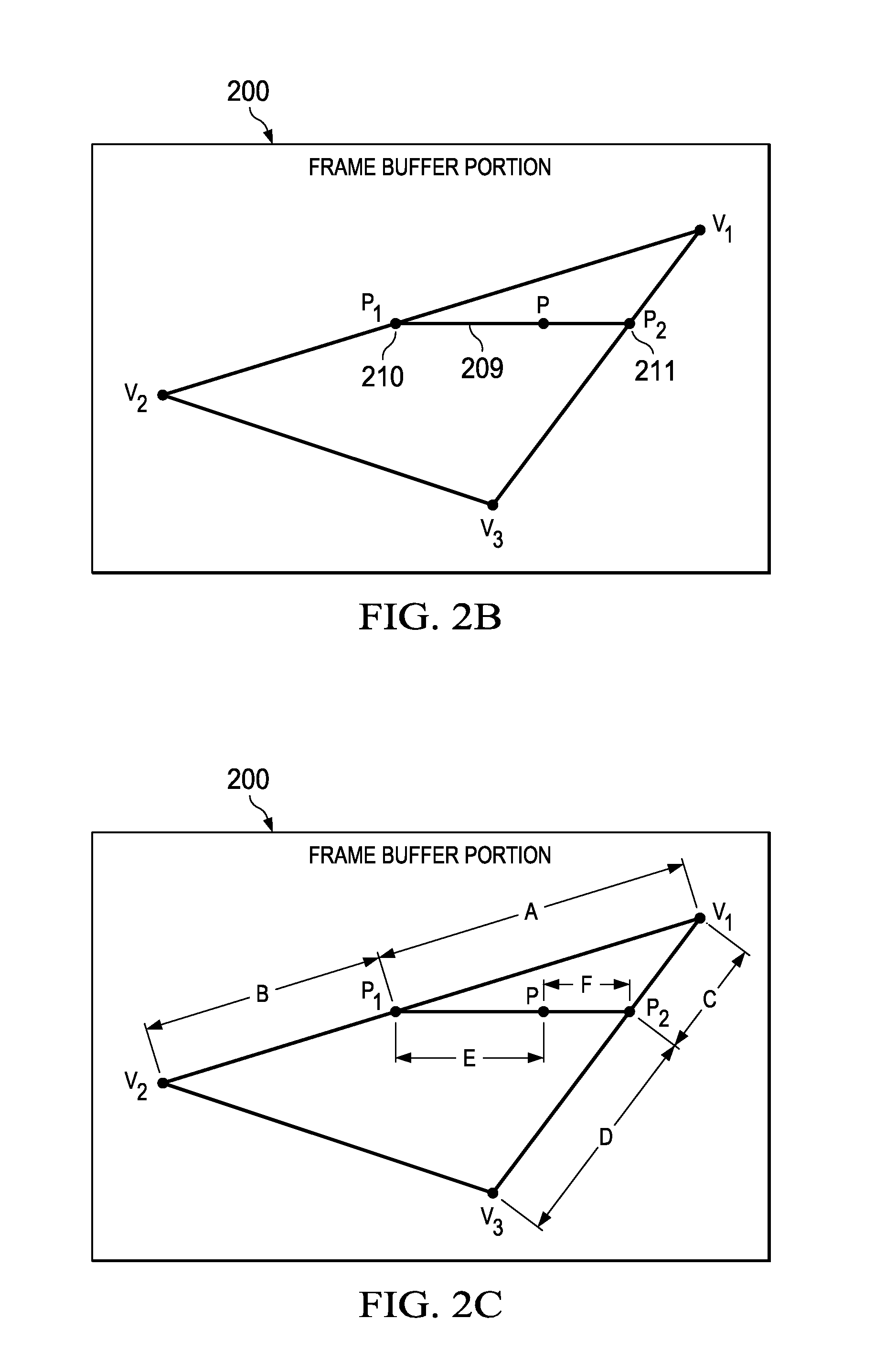System and method for rasterizing primitives using direct interpolation
- Summary
- Abstract
- Description
- Claims
- Application Information
AI Technical Summary
Benefits of technology
Problems solved by technology
Method used
Image
Examples
Embodiment Construction
[0033]Referring now to FIG. 1, there is shown a block diagram of a graphics system for practicing the present invention. System 100 is typically implemented on a computer system such as a personal computer having an Intel Pentium™ processor and running the Windows™ 95 operating system from Microsoft Corporation. However, those of ordinary skill in the art will realize that the practice or implementation of the present invention is not limited to the system disclosed in FIG. 1. Rendering engine 101 contains software and hardware for rendering primitives into frame buffer 102. Frame buffer 102 is typically implemented in an area of random-access memory (RAM) that may be optimized for video data storage. Individual memory locations in frame buffer 102 correspond to defined points on display 103. Data from frame buffer 102 is sent to display 103 for output to the user. Display 103 is typically a cathode-ray tube, but may be based on some other form of display technology.
[0034]Rendering ...
PUM
 Login to View More
Login to View More Abstract
Description
Claims
Application Information
 Login to View More
Login to View More - R&D
- Intellectual Property
- Life Sciences
- Materials
- Tech Scout
- Unparalleled Data Quality
- Higher Quality Content
- 60% Fewer Hallucinations
Browse by: Latest US Patents, China's latest patents, Technical Efficacy Thesaurus, Application Domain, Technology Topic, Popular Technical Reports.
© 2025 PatSnap. All rights reserved.Legal|Privacy policy|Modern Slavery Act Transparency Statement|Sitemap|About US| Contact US: help@patsnap.com



